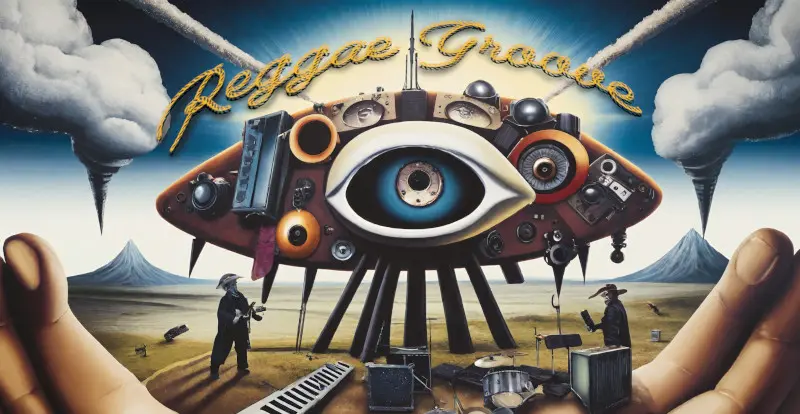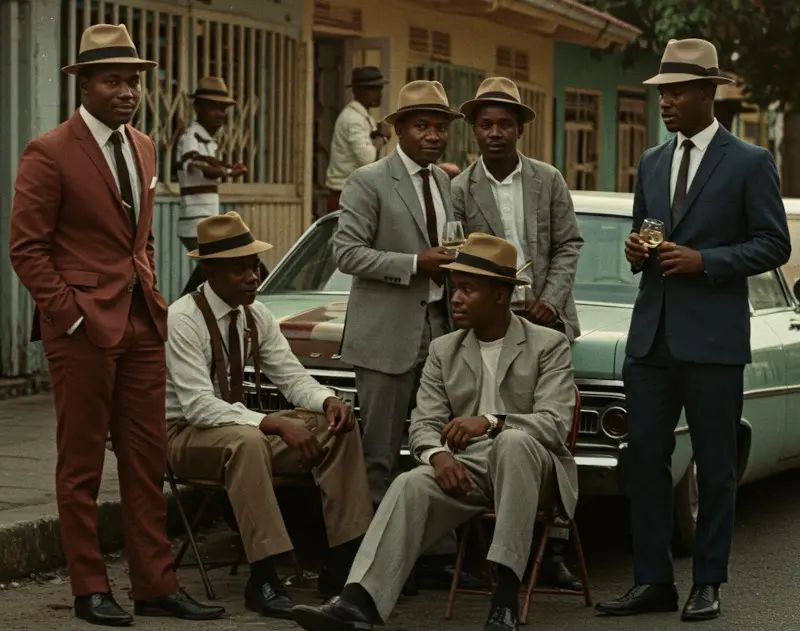
Rocksteady Music: The Jamaican Sound That Gave Rise to Reggae
When we think of Jamaican music, reggae usually takes center stage, but before reggae became a global force, another sound ruled Kingston’s dancehalls for a brief yet crucial period: rocksteady music.
Born in the mid-1960s, rocksteady may have lasted only a couple of years before morphing into reggae, but its influence on Jamaican culture — and on global popular music — is immeasurable.
We delve into the emergence of rocksteady music, examining its roots, musical features, iconic artists, cultural background, and enduring impact. After reading this article, you’ll understand why this transitional genre continues to be honored by collectors, musicians, and enthusiasts around the globe.

What Is Rocksteady Music?
In its most basic form, rocksteady music is the immediate ancestor of reggae and the slower, soulful cousin of ska. It emerged in Jamaica around 1966, a time when the fast, brass-heavy ska beat was starting to feel too frantic for Kingston’s sweltering summer heat.
Producers and musicians began experimenting with a slower tempo, allowing the bassline to take the lead. Instead of ska’s bounding energy, rocksteady created a groove that was relaxed, deep, and irresistibly danceable.Some say the very term rocksteady came from how people danced to it: swaying and “rocking steady” to the beat rather than jumping and skanking as they did with ska.

The Birth of Rocksteady in Jamaica
Jamaican society was at a turning point when rocksteady music emerged. Independence had arrived just a few years earlier, in 1962, and the island was going through social, political, and cultural growing pains.
The “rude boy” subculture — urban youths who were often unemployed and rebellious — found their voice in this new sound. Rocksteady songs frequently referenced their struggles and attitudes, either glamorizing or criticizing the lifestyle.
At the same time, Jamaica’s music industry was experiencing significant growth. Sound systems competed fiercely, and producers like Duke Reid and Coxsone Dodd were searching for the next big thing.
When the first rocksteady hits like “Take It Easy” by Hopeton Lewis and “The Tide Is High” by The Paragons began to dominate, the transition from ska was sealed.
Musical Characteristics of Rocksteady Music
If ska was energetic and reggae became spiritually heavy, rocksteady found the sweet spot in between. Its musical DNA can be broken down into a few defining features:
1. Tempo
Rocksteady slowed down ska’s lively pace. Most tracks fell in the 70–80 beats per minute range, giving dancers room to move smoothly and singers space to emote.
2. Basslines
The bass guitar became the lead instrument, driving the melody as much as the rhythm. This marked a groundbreaking change that would shape reggae in the subsequent years.
3. Vocals
Rocksteady’s slower groove allowed singers to shine. Vocal groups like The Techniques, The Heptones, and The Paragons mastered harmonies that remain some of the most beautiful in Jamaican music history.
4. Instruments
Brass instruments, so dominant in ska, were scaled back. Instead, rhythm guitar and bass took the spotlight, often paired with organ riffs.
5. Lyrical Themes
Lyrics ranged from romantic ballads (Alton Ellis’ “Rock Steady”) to social commentary (Desmond Dekker’s “007 (Shanty Town)”). This duality — love and struggle — remains a hallmark of Jamaican music.

Rocksteady Music and the Rude Boy Culture
One cannot talk about rocksteady without mentioning the rude boys. These young men in sharp suits and pork-pie hats were both admired and feared.
Songs like “Rude Boy Gone a Jail” or Dekker’s “007 (Shanty Town)” directly addressed their lifestyle. Some tunes warned against violence, while others celebrated rebellion. This created a tension in the music — a reflection of Jamaica’s urban struggles in the 1960s.In this way, rocksteady music was not just a sound but also a mirror of Jamaican society.
Key Artists and Producers in Rocksteady Music
Although the rocksteady era was short, it produced an incredible roster of talent. Some of these artists would go on to define reggae itself.
- Alton Ellis – Often called the “Godfather of Rocksteady,” Ellis blended soulful vocals with smooth rhythms. His track “Rock Steady” gave the genre its very name.
- Desmond Dekker – His international hit “007 (Shanty Town)” brought rude boy culture to the world stage.
- The Paragons – They are most recognized for their rocksteady vocal harmonies on “The Tide Is High,” which Blondie later covered.
- The Techniques – With classics like “You Don’t Care”, they embodied the romantic side of the genre.
- The Heptones – Their harmonies carried over seamlessly into the reggae era.
Producers Duke Reid and Coxsone Dodd – Their Treasure Isle and Studio One labels were hotbeds of innovation. Reid in particular was instrumental in establishing the rocksteady sound.

Rocksteady vs Ska and Reggae
Think of rocksteady as the missing link.
- Compared to Ska – Ska was quicker, more brass-driven, and influenced by R&B and jazz. Rocksteady slowed things down and gave more space to vocals and bass.
- Compared to Reggae – Reggae, which took over by 1968, emphasized Rastafarian themes, one-drop drumming, and spiritual consciousness. Rocksteady was less overtly religious, more about love songs and rude boy tales.
Without rocksteady, reggae as we know it would never have existed.
Classic Rocksteady Songs You Should Know
If you’re new to the genre, these classic rocksteady songs are essential listening:
- “Rock Steady” – Alton Ellis
- “007 (Shanty Town)” – Desmond Dekker
- “The Tide Is High” – The Paragons
- “Wear You to the Ball” – The Paragons
- “Queen Majesty” – The Techniques
- Millie Small’s “My Boy Lollipop” (slower live versions)
- “Party Time” – The Heptones
Each of these captures a different side of the genre, from sweet romance to gritty street tales.

Why Did Rocksteady Fade So Quickly?
By 1968, rocksteady was already evolving into reggae. Looking back, there are numerous factors contributing to this swift transformation:
- Innovative Drumming – The “one drop” beat, attributed to Carlton Barrett of The Wailers, provided reggae with its unique rhythm.
- The impact of Rastafarian – Reggae embraced spiritual and political themes, which resonated more profoundly during Jamaica’s rapid changes.
- Globalization dissemination – As Jamaican music gained international traction, reggae found greater crossover success.
Some argue that rocksteady didn’t die but simply transformed. Its DNA can be seen in all subsequent reggae tracks.
The Global Legacy of Rocksteady Music
Though its peak lasted only about two years, rocksteady left a global footprint.
- Lovers Rock in the UK – Immigrant communities in London developed a softer, romantic reggae style directly inspired by rocksteady harmonies.
- 2-Tone Ska in the UK – In the late 70s, groups like The Specials and Madness paid tribute to ska and rocksteady styles.
- Reggae Revival Musicians – Contemporary artists such as Bitty McLean and The Frightnrs draw directly from the soulful origins of rocksteady.
Fans also play a vital role in maintaining the genre’s visibility. Original 45s from labels like Treasure Isle are highly sought after globally, often selling for hundreds of dollars.

Rocksteady Music in Jamaica Today
In Jamaica itself, rocksteady is treated with reverence. Periodic revival concerts celebrate the era, often featuring surviving legends. Radio programs still play the classics, and younger reggae artists tip their hats to the pioneers.
Remarkably, streaming services have revitalized rocksteady. Playlists like Best Rocksteady Songs introduce the genre to younger listeners across the globe.
Why Rocksteady Still Matters
So why should anyone in 2025 care about a genre that lasted barely two years in the 1960s?
Because rocksteady music laid the foundation for everything that followed in Jamaican popular music, it connected ska and reggae, transformed the significance of the bass, and introduced unforgettable vocal harmonies.
It also signifies a captivating period in Jamaican history: independence, cultural self-identity, and youthful defiance all encapsulated within a rhythm that was both calming and subversive.
For reggae lovers, understanding rocksteady is essential. Without it, reggae would not sound the way it does — and the global musical landscape would look very different.
Conclusion
Despite its brief existence, rocksteady music is nevertheless regarded as one of Jamaica’s most valuable cultural legacies. Its songs of love, struggle, and identity continue to resonate with listeners today.
If you want to trace the lineage of reggae — or if you simply love soulful harmonies and deep basslines — start with rocksteady.
From Alton Ellis to The Paragons, from Kingston dancehalls to London sound systems, rocksteady’s heartbeat still echoes.
So put on “Rock Steady” or “The Tide Is High”, close your eyes, and imagine a hot Kingston night in 1966 — when the music slowed down, the bass took over, and the world was changed forever.

